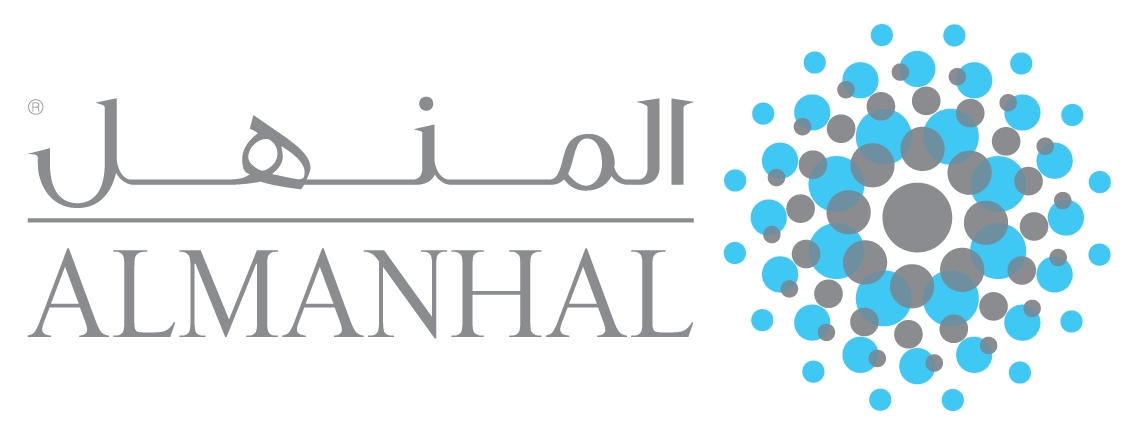An Analytical Framework to Examine Shari'ah-Compliant Mortgage Financing by Financial Cooperatives in Malaysia
DOI:
https://doi.org/10.31436/jif.v4i2.89Abstract
This paper utilises an analytical framework to explore and critically examine issues and challenges of offering Shari’ah-compliant mortgage financing by financial cooperatives in Malaysia. Concepts from five distinct theories (Theory of Credit Cooperative, Transaction Costs Theory, Agency Theory, Stakeholder Theory, and Theory of Credit Rationing) are modified and integrated to form a hybrid, layered framework. This is then used as a ‘lens’ to highlight the issues pertaining to business models and strategies, good governance, regulation and supervision, risk management, human resource management, which may influence the success of mortgage financing. This analytical framework is useful for relevant stakeholders on how to manage the issues, challenges, and harnessing the prospects of Shari’ah-compliant mortgage financing products.
Downloads
References
Allen, F., & Santomero, A. M. (1998). The theory of financial intermediation. Journal of Banking & Finance, 21(11), 1461–1485.
Allen, F., & Santomero, A. M. (2001). What do financial intermediaries do ? Journal of Banking & Finance, 25(2), 271–294.
Al-Muharrami, S., & Hardy, D. C. (2014). Cooperative and Islamic banks: What can they learn from each other? In J. Ortega (Ed.), International Perspectives on Participation Advances in the Economic Analysis of Participatory & Labor-Managed Firms (Volume 15., pp. 73–94). Emerald Group Publishing Limited.
Basterretxea, I., & Albizu, E. (2011). Management training as a source of perceived competitive advantage: The Mondragon Cooperative Group case. Economic and Industrial Democracy, 32(2), 199–222.
Beccerra, M., & Gupta, A. K. (1999). Trust within the organization: Integrating the trust literature with agency theory and transaction economics. Public Administration Quarterly, 23(2), 177–203.
Benjamin, L., Rubin, J. S., & Zielenbach, S. (2004). Community development financial institutions: Current issues and future prospects. Journal of Urban Affairs, 26(2), 177–195.
Benston, G. J. (1972). Economies of scale in financial institutions. Journal of Money, Credit & Banking, 4(2), 312–341.
Benston, G. J., & Smith, C. W. (1974). A transaction cost approach to the Theory of Financial Intermediation. The Journal of Finance, 31(2), 215–232.
Besley, T. (1995). Nonmarket institutions for credit and risk sharing in low-income countries. The Journal of Economic Perspectives, 9(3), 115–127.
Birchall, J. (2013). The potential of co-operatives during the current recession; theorizing comparative advantage. Journal of Entrepreneurial and Organizational Diversity, 2(1), 1–22.
Cornforth, C., & Thomas, A. (1990). Cooperative development: Barriers, support structures and cultural factors. Economic and Industrial Democracy, 11(4), 451–461.
Davis, K. (2001). Credit union governance and survival of the cooperative form. Journal of Financial Services Research, 19(2/3), 197–211.
Davis, P. (2001). The governance of co-operatives under competitive conditions: Issues, processes and culture. Corporate Governance, 1(4), 28–39.
Denzin, N. K. (1978). The research act: A Theoretical introduction to sociological methods (2nd ed.). New York: McGraw Hill.
Duca, J. V., & Rosenthal, S. S. (1991). An empirical test of credit rationing in the mortgage market. Journal of Urban Economics, 29(2), 218–234.
Ebrahim, M. S. (2009). Can an Islamic model of housing finance cooperative elevate the economic status of the underprivileged? Journal of Economic Behavior & Organization, 72(3), 864–883.
El Kafrawy, A. H. (2012). Housing policy and finance in Egypt:
Extending the reach of mortgage credit. Unpublished PhD thesis, University of Glasgow.
Emmons, W. R., & Mueller, W. (1997). Conflict of interest between borrowers and lenders in credit cooperatives: The case of German co-operative banks. (Working Paper 1997-009A). St. Louis: Federal Reserve Bank of St. Louis.
Emmons, W. R., & Schmid, F. A. (2002). Pricing and dividend policies in open credit cooperatives. Journal of Institutional and Theoretical Economics, 158, 234–255.
Esho, N. (2001). The determinants of cost efficiency in cooperative financial institutions: Australian evidence. Journal of Banking & Finance, 25(5), 941–964.
Fama, E. (1985). What’s different about banks? Journal of Monetary Economics, 15(1), 29–39.
Farhi, E., Golosov, M., & Tsyvinski, A. (2009). A theory of liquidity and regulation of financial intermediation. Review of Economic Studies, 76(3), 973–992.
Goglio, S., & Alexopoulos, Y. (2014). Editorial: Cooperative banks at a turning point? Journal of Entrepreneurial and Organizational Diversity, 3(1), 1–8.
Gorton, G., & Schmid, F. (1999). Corporate governance, ownership dispersion and efficiency: Empirical evidence from Austrian cooperative banking. Journal of Corporate Finance, 5(2), 119–140.
Green, E. J., & Lin, P. (2000). Diamond and Dybvig’s classic Theory of Financial Intermediation: What's missing? Quarterly Review (02715287), 24(1), 3–13.
Griffiths, G., & Howells, G. (1990). Britain’s best kept secret? An analysis of the credit union as an alternative source of credit. Journal of Consumer Policy, 13(4), 447–466.
Hart, O., & Moore, J. (1998). Cooperative vs. outside ownership. (Working Paper 6421). Cambridge: National Bureau of Economic Research.
Heath, J. (2009). The uses and abuses of Agency Theory. Business Ethics Quarterly, 19(4), 497–528.
Hellwig, M. (2000). Financial intermediation with risk aversion. The Review of Economic Studies, 67(4), 719–742.
Hempel, G., & Yawitz, J. (1977). Financial management of financial institutions. Prentice-Hall.
Huppi, M. (1990). The role of groups and credit cooperatives in rural lending. The World Bank Research Observer, 5(2), 187–204.
Jalil, Z., Hamid, H., & Rohim, S. N. (2012, July 15). Penjana ekonomi negara [National economic generator]. Utusan Malaysia. Retrieved September 30, 2014, from http://www.utusan.com.my/utusan/rencana/20120715/re_01/penjana-ekonomi-negara
Jensen, M., & Meckling, W. (1979). Theory of the firm: Managerial behavior, agency costs and ownership. Journal of Financial Economics, 3(4), 305–360.
Kaplan, R. S., & Norton, D. P. (2001). The strategy-focused organization: How balanced scorecard companies thrive in the new business environment. Boston, Massachusetts: Harvard Business School Publishing Corporation.
Keating, B. (1979). Prescriptions for efficiency in nonprofit firms. Applied Economics, 11(3), 321–332.
Kent, R. (1987). Dynamic credit rationing in the home mortgage market. AREUEA Journal: Journal of the American Real Estate & Urban Economics Association, 15(4), 300–320.
McKillop, D. G., Ward, A., & Wilson, J. O. S. (2007). The development of credit unions and their role in tackling financial exclusion. Public Money & Management, 27(1), 37–44.
Merrett, S., & Russell, K. (1994). Non-conventional finance for self-help housing. Habitat International, 18(2), 57–69.
Murray, J. D., & White, R. W. (1980). Economies of scale and deposit-taking financial institutions in Canada. Journal of Money, Credit and Banking, 12(1), 58–71.
Ory, J.-N., & Lemzeri, Y. (2012). Efficiency and hybridization in cooperative banking: The French case. Annals of Public and Cooperative Economics, 83(2), 215–250.
Palazzo, G., & Rethel, L. (2007). Conflicts of interest in financial intermediation. Journal of Business Ethics, 81(1), 193–207.
Patin Jr, R. P., & McNiel, D. (1991). Benefit imbalances among credit union member groups: evidence of borrower-dominated, saver-dominated and neutral behaviour? Applied Economics, 23, 769–779.
Peterson, R., & Kidwell, D. (1983). Credit union participation in the mortgage markets. Nebraska Journal of Economics and Business, 22(1), 45–57.
Rasmusen, E. (1988). Mutual banks and stock banks. Journal of Law and Economics, 31(2), 395–421.
Reichert, A., & Rubens, J. (1994). Risk management techniques employed within the US credit union industry. Journal of Business Finance & Accountancy, 21(1), 15–35.
Ross, S. A. (1973). The economic Theory of Agency: The principal’s problem. American Economic Review, 63(2), 134–139.
Santomero, A. (1984). Modeling the banking firm: A survey. Journal of Money, Credit and Banking Banking, 16(4), 576–602.
Smith, D., Cargill, T., & Meyer, R. (1981). Credit unions: an economic theory of a credit union. The Journal of Finance, 36(2), 519–528.
Srinivasan, A., & King, B. F. (1998). Credit union issues. Economic Review, 83(3), 32–41.
Stanley, L. (2012). The difference between an analytical framework and a theoretical claim: A reply to Martin Carstensen. Political Studies, 60(2), 474–482.
Stansell, S. R., & Mitchell, A. C. (1985). The impact of credit rationing on the real sector: A study of the effect of mortgage rates and terms on housing starts. Applied Economics, 17(5), 37–41.
Stiglitz, J. E., & Weiss, A. (1981). Credit rationing with imperfect information. The American Economic Review, 71(3), 393–410.
Suruhanjaya Koperasi Malaysia. (2009). GP7: Garis Panduan Mengenai Pembiayaan Islam oleh Koperasi [GP7: Guidelines on Islamic Financing by Cooperatives].
Suruhanjaya Koperasi Malaysia. (2010). Dasar Koperasi Negara 2002-2020 [National Cooperative Policy 2002-2020].
Suruhanjaya Koperasi Malaysia. (2014a). Direktori Indeks 100 Koperasi Terbaik Malaysia 2014 [Top 100 Malaysian Cooperatives Index].
Suruhanjaya Koperasi Malaysia. (2014b). Perangkaan Am Koperasi Mengikut Fungsi [General Statistics According to Functions].
Taylor, R. A. (1971). The credit union as a cooperative institution. Review of Social Economy, 29(2), 207–217.
Tompson, W. (2000). Financial backwardness in contemporary perspective: Prospects for the development of financial intermediation in Russia. Europe-Asia Studies, 52(4), 605–625.
Tripp, J. D., & Smith, S. D. (1993). U.S. credit union motivation for involvement in the first-mortgage market. Journal of Real Estate Finance and Economics, 7, 229–236.
Walker, M. C., & Chandler, G. G. (1977). On the allocation of the net monetary benefits of credit union membership. Review of Social Economy, 35(2), 159–168.
Worth, T. (2013). Can co-ops redefine sustainable business? The Guardian. Retrieved December 11, 2013, from http://www.theguardian.com/sustainable-business/cooperatives-sustainable-business-structures












